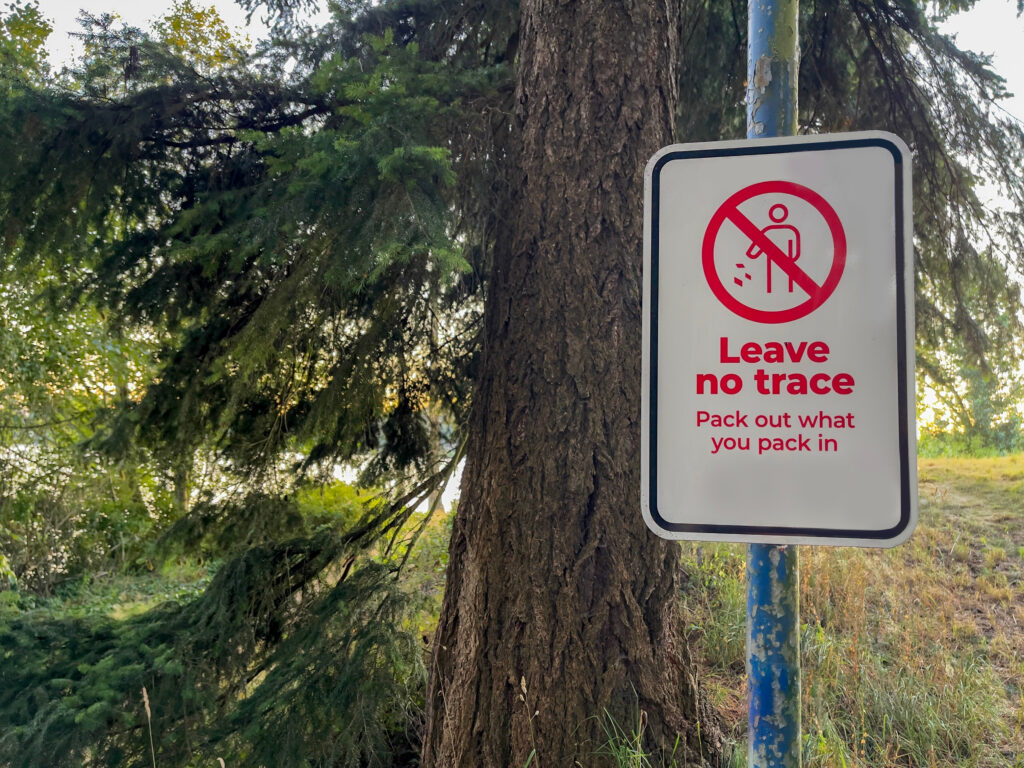The Guiding Principle
Camping can be a great way to enjoy nature, relax, and enjoy our planet. However, if you are not careful you can have a negative impact on the environment without even realizing it. Knowing some basic sustainable practices when it comes to camping is very important, starting with one leading principle, “Leave No Trace”.
What does this mean?
Following the “Leave No Trace” rule can be a simple yet effective way of ensuring you are having as minimal of a negative impact on the planet as possible. It ensures that you are not leaving behind waste, any harmful products, or disturbing the environment. This is one of the best rules/practices to follow when you are camping and connecting with nature, leave the area as you found it.

What does this look like?
There are a few main core principles within the “Leave No Trace” rule. The first one is to pack up everything that you brought. Whether it be camping gear like tents, tarps, or other utensils, or food packaging and cooking gear, make sure you take it all with you. Leaving behind anything that is human-made, and not bio-degradable can have a negative impact on wildlife and natural habitats.
Another core principle is to stay in designated areas. Venturing off of specific trail paths, campsites, or other marked areas can disturb natural habitats and mess up ecosystems. The best way to avoid this is to stay on the marked paths and leave uncharted areas alone.
Finally, reducing waste and disposing of it properly. Make sure that you are not leaving any waste on the ground. This includes both physical waste products like packaging and liquid waste. Avoid dumping any cleaners or other products out onto the ground that are not safe for the environment or nature. Make sure you pack up all packaging that you brought and other trash, including things that are considered biodegradable. The best practice is to leave nothing behind and make sure that all waste gets out in its proper place like a waste bin or recycling container.
